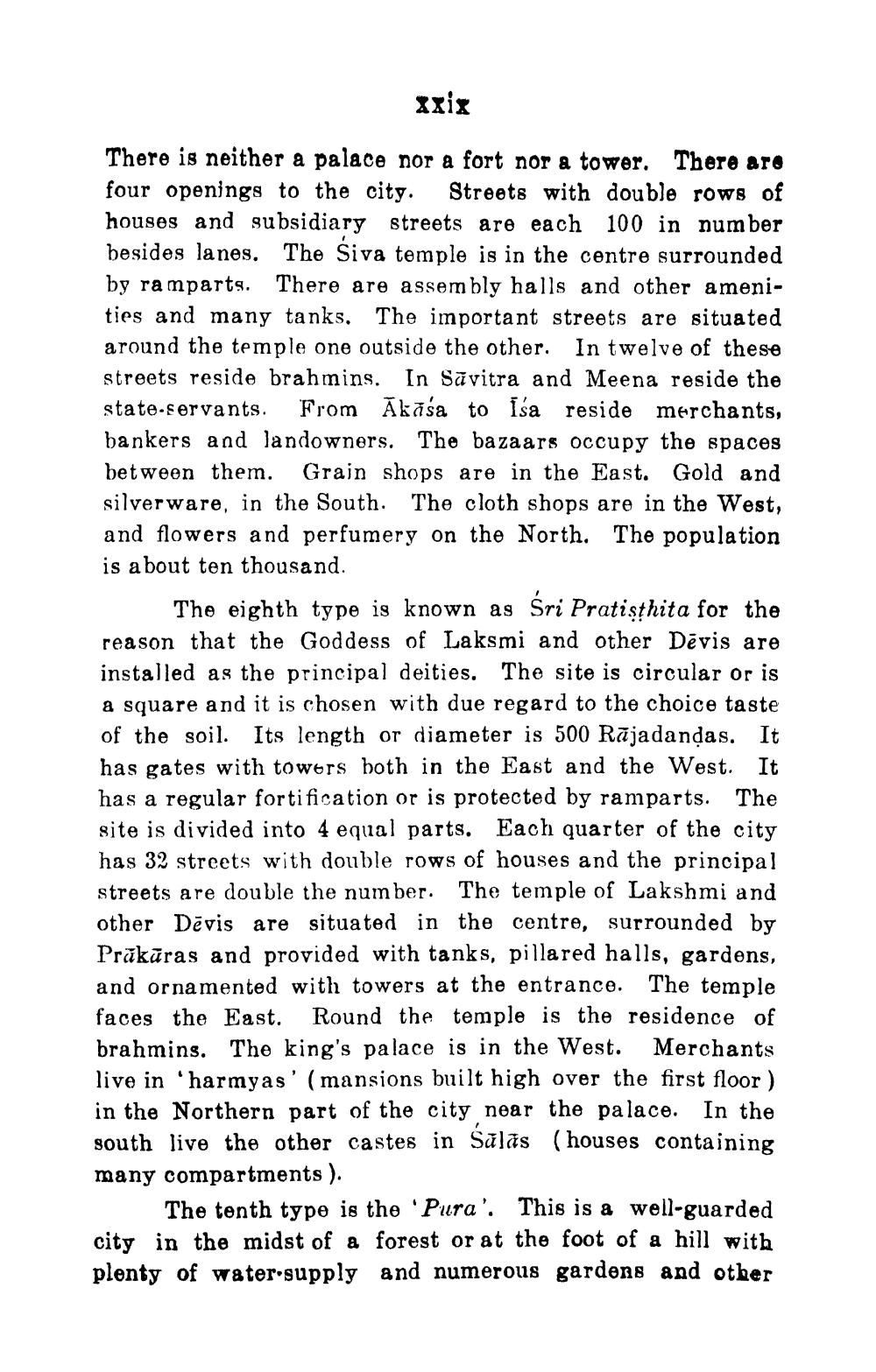________________
xxix
There is neither a palace nor a fort nor a tower. There are four openings to the city. Streets with double rows of houses and subsidiary streets are each 100 in number besides lanes. The Siva temple is in the centre surrounded by ramparts. There are assembly halls and other amenities and many tanks. The important streets are situated around the temple one outside the other. In twelve of these streets reside brahmins. In Savitra and Meena reside the state-servants. From Akasa to Isa reside merchants, bankers and landowners. The bazaars occupy the spaces between them. Grain shops are in the East. Gold and silverware, in the South. The cloth shops are in the West, and flowers and perfumery on the North. The population is about ten thousand.
The eighth type is known as Śri Pratisthita for the
reason that the Goddess of Laksmi and other Dēvis are installed as the principal deities. The site is circular or is a square and it is chosen with due regard to the choice taste of the soil. Its length or diameter is 500 Rajadanḍas. It has gates with towers both in the East and the West. It has a regular fortification or is protected by ramparts. The site is divided into 4 equal parts. Each quarter of the city has 32 streets with double rows of houses and the principal streets are double the number. The temple of Lakshmi and other Devis are situated in the centre, surrounded by Prākāras and provided with tanks, pillared halls, gardens, and ornamented with towers at the entrance. The temple faces the East. Round the temple is the residence of brahmins. The king's palace is in the West. Merchants live in harmyas' (mansions built high over the first floor) in the Northern part of the city near the palace. In the south live the other castes in Sālās many compartments).
(houses containing
The tenth type is the 'Pura'. This is a well-guarded city in the midst of a forest or at the foot of a hill with plenty of water supply and numerous gardens and other




